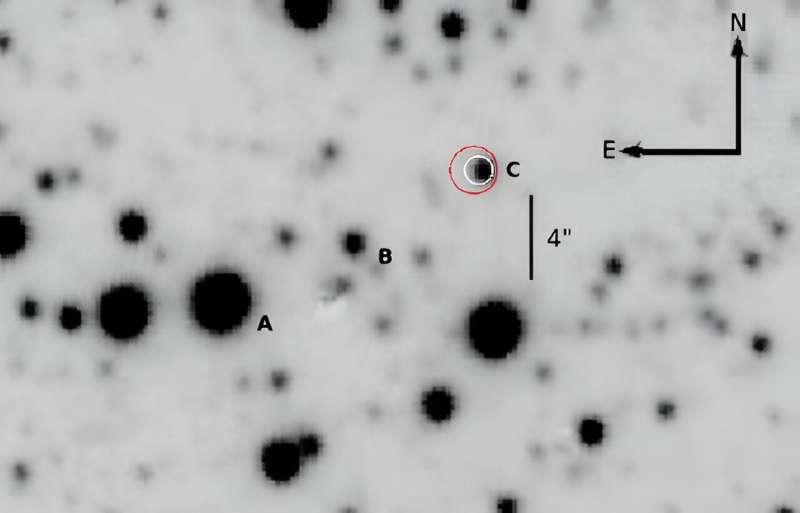January 15, 2024 report
This article has been reviewed according to Science X's editorial process and policies. Editors have highlighted the following attributes while ensuring the content's credibility:
fact-checked
preprint
trusted source
proofread
Astronomers discover new Be/X-ray binary system

Astronomers from the Open University in Milton Keynes, UK and elsewhere report the detection of a new Be/X-ray binary. The newfound system, designated 4XMM J182531.5–144036, exhibits persistent X-ray emission. The finding was detailed in a paper published January 4 on the pre-print server arXiv.
X-ray binaries are composed of a normal star or a white dwarf transferring mass onto a compact neutron star or a black hole. Based on the mass of the companion star, astronomers divide them into low-mass X-ray binaries (LMXBs) and high-mass X-ray binaries (HMXBs).
Be/X-ray binaries (Be/XRBs) are the largest subgroup of HMXBs. These systems consist of Be stars and, usually, neutron stars, including pulsars. Observations have found that most of these systems showcase weak persistent X-ray emission that is interrupted by outbursts lasting several weeks.
4XMM J182531.5–144036 was initially detected as a hard X-ray source in April 2008 with ESA's XMM-Newton satellite. Given that its nature remains undisclosed, a team of astronomers led by Open University's Andrew Mason Jr. has analyzed the available data from XMM-Newton, NASA's Chadra spacecraft, Very Large Telescope (VLT) and UKIDSS (UKIRT Infrared Deep Sky Survey) Galactic Plane Survey, in order to investigate this source.
The study found that the position of 4XMM J182531.5–144036 is coincident with an infrared object exhibiting a near-infrared excess when compared to the spectra of early B-type dwarf or giant stars. This object also displays a strong hydrogen emission line. The researchers noted that these properties are characteristic for Be stars.
Furthermore, coherent X-ray pulsation of 4XMM J182531.5–144036 was detected, with a period of 781 seconds. The presence of such a pulsation is typical for BeXRB pulsars. The astronomers added that the X-ray pulse profile is asymmetric, which is seen in X-ray pulsars and it can provide information about the magnetic field structure of the neutron star.
According to the paper, the X-ray pulsation is seen with the same profile in widely separated XMM-Newton and Chandra observations. This indicates that the X-ray emission is likely persistent.
When it comes to the orbital period of 4XMM J182531.5–144036, the researchers calculate that it is within the range of 250–500 days. The orbit of the system was found to have a low eccentricity.
"We therefore conclude that 4XMM J182531.5–144036 is a newly identified persistent, long period, Be/X-ray binary," the authors of the study wrote.
The astronomers estimate that the distance to 4XMM J182531.5–144036 is between 3,300 and 23,00 light years. However, they noted that the system is too faint to be detected by ESA's Gaia satellite so no independent distance estimate is available.
More information:
A. B. Mason et al, 4XMM J182531.5–144036: A new persistent Be/X-ray binary found
within the XMM-Newton serendipitous survey, arXiv (2024). DOI: 10.48550/arxiv.2401.02468
Journal information: arXiv
© 2024 Science X Network




















